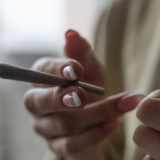
Table of Contents
How to Brew a Damina Tea
Background Information on Damiana
Damiana comes from the Turneraceae family of herbs and is also known as Turnera diffusa or Turnera aphrodisiacais. It is a shrub that is indigenous to Central America, Mexico, and the West Indies that produces yellow flowers. It is currently also found in the United States. However, growing, possessing, or selling the herb is actually outlawed in Louisiana for its psychoactive properties. Damiana is also known as Old Woman’s Broom and is related to the herb, Passionflower.
Damiana is historically known as an aphrodisiac that can cause a slight high when inhaled. It is said the effect of inhaling damiana is not-unlike the effect of inhaling low doses of cannabis. Ancient Aztec and Mayan tribes used the herbs this way. However, over the years, it has been used to treat a variety of ailments as well, such as anxiety, bedwetting, constipation, depression, diabetes, hormonal balancing, improving stamina, and relieving water retention.
Damiana’s chemical composition is so complex that not all of its components have been completely identified. However, what is known is that it contains arbutin, cyanogenic glycosides, flavonoids, phosphorus, tannin, thymol, 0.5-1% volatile oils, and essential oils.
Damiana is primarily used to relax the mind and body. It is the leaves and stems of the damiana shrub, which are described as a bit minty or spicy, that are typically used for medicinal purposes. For tea-making, just the leaves are prepared. However, as pleasant as the natural smell of the plant can be, damiana is known to produce bitter-tasting leaves. For this reason, it is often combined with other herbs to brew a smoother flavor. Still, one can brew a cup of tea using just damiana.
Traditional Preparation for Damiana Tea
The traditional remedy calls for 2-4 grams (4-8 teaspoons) of dried leaves infused in a cup of boiling water taken two or three times each day. However, one or two teaspoons is more than enough to receive any medicinal benefits damiana has to offer.
Damiana Tea Recipe
Equipment
A tea kettle or saucepan, a measuring cup, measuring spoons, a strainer or infuser, and two mugs.
Ingredients
•1 to 2 teaspoons of dried damiana leaves
•1 cup of water
•Lemon wedge or 1/2 teaspoon lemon juice
•Raw honey for sweetness and additional health benefits
Recipe Instructions
Place the dried damiana leaves into one of the clean cups, mugs, or any other heatproof beverage containers and set aside. Use an infuser if one is available.
Bring water to a rolling boil in a tea kettle or small saucepan on the stove. A rolling boil is the stage when bubbles have begun to form in the water, but the water is not yet boiling. Boiling water will cause the leaves to leak more acid and become bitter-tasting. Since damiana already tends to be bitter, a rolling boil can help to prevent this.
Once the water is ready, measure out one cup and pour it over the loose leaves or the infuser in the cup. Cover to prevent essential oils from leaching into the air and steep for 15-20 minutes.
After steeping, the infuser can be removed, or the tea can be strained into the second mug or thermos.
All-natural Stevia may be added for sweetness in place of raw honey. However, Stevia has been known to cause diarrhea in sensitive individuals. Do not add sugar as sugar may negate any medicinal benefits rendering damiana useless.
The tea can be garnished with the slice of lemon, or lemon juice may be added for a bit of citrus flavor. Drink immediately.
How to Store Damiana Leaves
Exposure to the air will degrade damiana of its freshness and potency. It should be stored in an airtight container, preferably glass or ceramic, and placed away from heat and light.
Damiana Contraindications
Damiana has been shown to produce mild hypoglycemia in animals, so individuals with diabetes or hypoglycemia should use damiana with caution, as blood sugar levels could dip and dive.
Damiana has traditionally been used as an abortive, so if one is trying to become pregnant or is already pregnant, it should be avoided.
Side Effects of Damiana
In excessive doses, a headache, and insomnia have occurred, and convulsions have been reported in those who have taken more than 200 grams of damiana extract. When taken as recommended, no side effects have been reported.
Drug Interactions
There are no drug interactions reported. However, damiana may cause a drop in blood sugar in those taking medications to control blood sugar.
Final Words on Damiana Herbal Tea
Damiana has been used as a tobacco substitute, marijuana substitute, relaxation herb, incense, psychoactive herbal tea, and many other purposes for a really long time. In some cultures, it is the preferred social herb. Remember though, like all herbs, the quality of the plant matters. Some of the better sources for Damiana will ensure the crop is well maintained, the harvest is fresh, and the storage is impeccable!
Sources
Healthline.com, https://www.healthline.com/health/damiana-ancient-aphrodisiac
Bonappetit.com, https://www.bonappetit.com/story/damiana-aphrodisiac-superherb
Mercola.com. https://articles.mercola.com/herbs-spices/damiana.aspx
Image Credits:
Damiana Tea [ID 107857639 © Eskymaks | Dreamstime.com]




